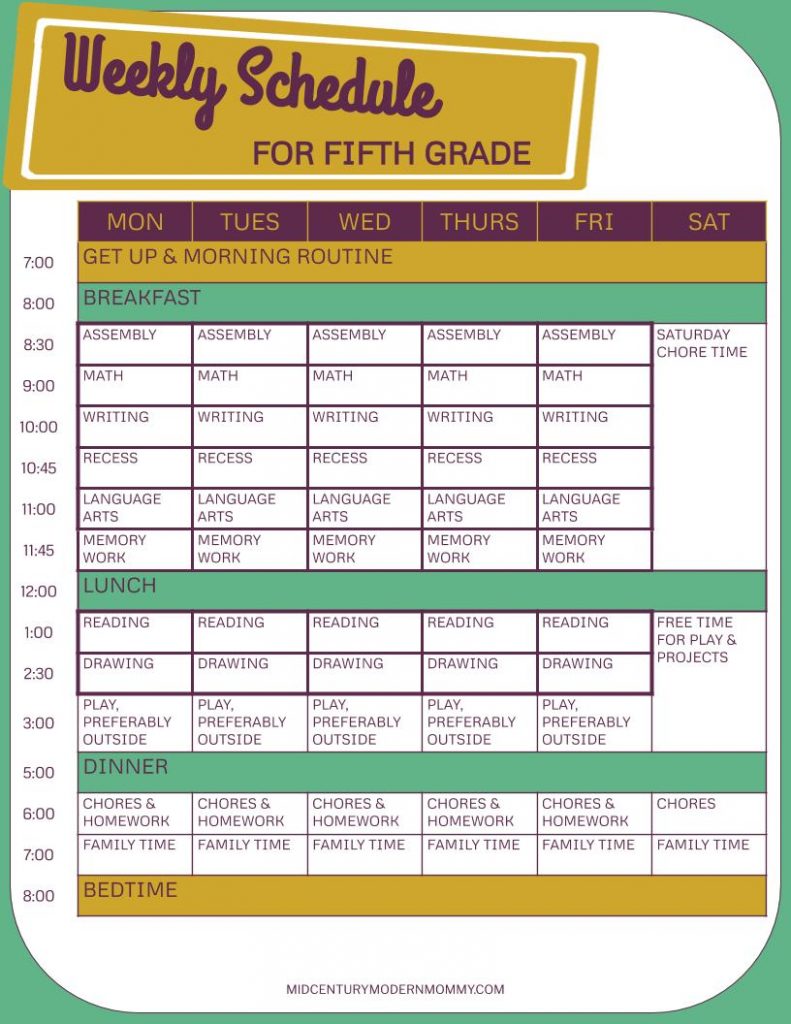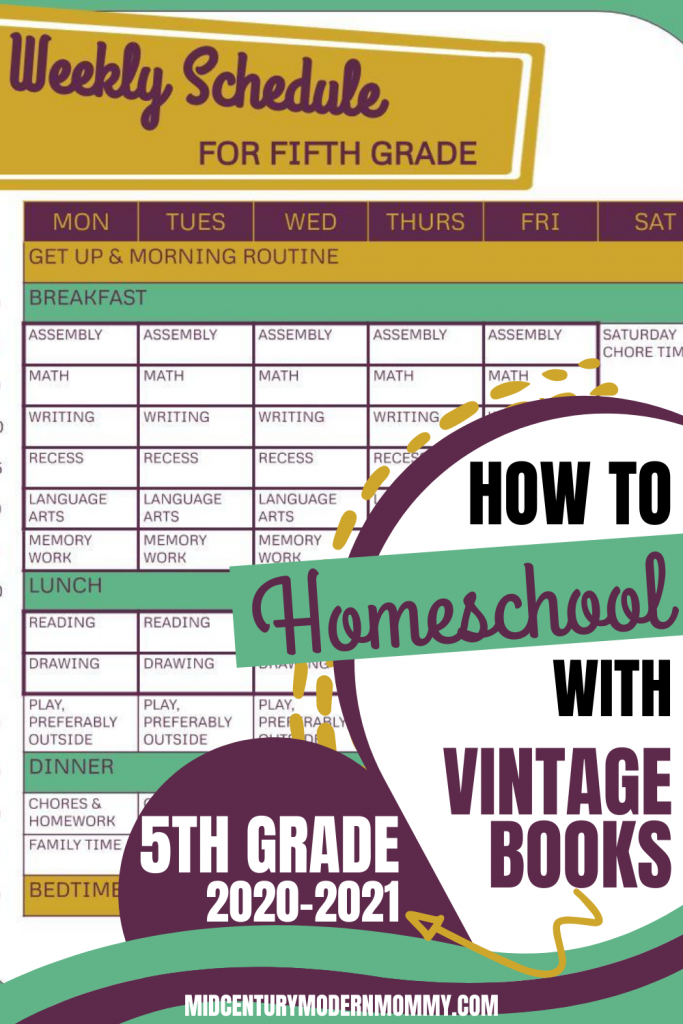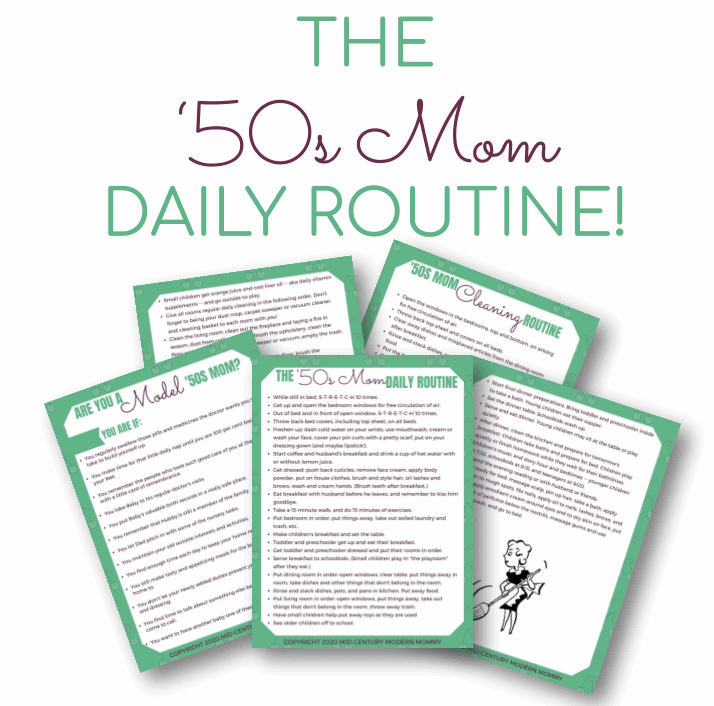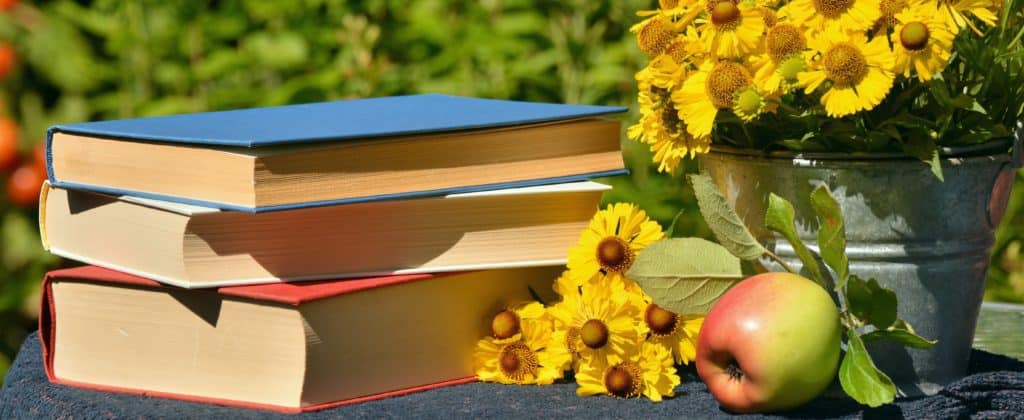This post contains affiliate links. If you click a link and make a purchase, I may receive, at no additional cost to you, a small commission. Find out more on my Disclosures page, and thank you so much for your support!
5th Grade! The last of the elementary years, except that as a vintage homeschooler, I treat 1st-8th grade as a solid block, and then high school separately. Anyway, here’s how we homeschool using vintage books for 5th grade.
My Curriculum Choices for 5th Grade 2020-2021
- My home library
- Vintage educational posters and flashcards
- Vocabulary flashcards
- Identification and word posters
- Maps
- Robinson Curriculum
- Dollar Homeschool
- The Hobbit by J.R.R. Tolkien
- The Chronicles of Narnia by C.S. Lewis
- Religious resources to fit your family’s needs
5th Grade Schedule for 2020-2021

Teaching Assembly
This is exactly the same for everyone every day. Everyone participates. I have a different child lead each week, in rotation.
- Pledge of Allegiance
- Psalm 23
- Sing the weekly hymn
- Read the daily Bible story
- Talk about the day (traditions, liturgy, saints)
- Pray
Teaching Math
Everyone of my children has mastered their math facts and is on to daily written math lessons. I use either Saxon math or Ray’s Arithmetic series for the math “spine.”
The goal of elementary math is to prepare for abstract math like algebra. So, in the elementary grades, I focus on:
- Math lessons as a daily habit
- Over-practicing foundations, like operations and math facts
- Drill and practice for speed and accuracy
- Reverse operations for self-checking
- Creating problems to demonstrate competency
The three most important skills in math that a child needs at college-level are mastery of math facts, especially times tables, and operations, long division, and data analysis. ALL of the elementary years are spent mastering basic math through long division, so that fluency in those things leads to mastery of algebra, claculus, and statistics later on.
Teaching Writing
This year is the last year of copywork. During the course of the year, the child will learn how to write a paragraph in language arts. And beginning next year, in middle school, writing will be actually creating a page of original content. But for this year, it’s still copywork.
After writing is recess. I provide balls, jump ropes, and chalk. And I encourage old-fashioned play, such as jumping rope or playing tag or hopscotch.
Teaching Language Arts
Language arts in 5th grade is all about learning how to write a paragraph. In 3rd grade, the focus is on learning to write a sentence. In 4th grade, sentence practice means learning to diagram sentences. And in 5th grade, sentence diagramming will continue, alongside learning to write a good paragraph.
For 5th grade, I use McGuffey’s 3rd Reader (the child has usually finished with both McGuffey’s Speller, and with Harvey’s Elementary Grammar) and Kellogg’s Text-Book on Rhetoric. Robinson Curriculum vocabulary is also continued.
I assign about one lesson from each of these books every week, and the student works on the same lessons all week. I also assign one vocabulary set each week. Once he’s worked on the vocabulary packet for a week, the vocabulary flashcards go into the daily memory work practice.
Teaching Memory Work
5th grade memory work is more of what the child has been memorizing, along with lots of practice reciting. You cannot expect a child to be good at public-speaking if it isn’t practiced a lot!
Teaching Reading
Reading selections come from the Robinson Curriculum booklist. On Fridays, reading time is “Science Friday” — the reading selections focus on the history and narratives of science and technology, including mining, agriculture, medicine — all the things.
We also include extra reading from the Heritage History library. Mostly, these are books that are printed out and bound for after-school reading. They also read the Hardy Boys, Tintin, and other vintage “boy” books for free reading.
Teaching Drawing
Now that the child has learned to draw maps and also to draw simple illustrations, the next step is notebooking. In the beginning, notebooking is either drawing a map or illustration, and composing a short, 1-sentence caption, or making a story sequence with simple sentences and drawings.
The idea is to move them from this kind of guided notebooking to the old-fashioned method of keeping a commonplace book. By next year, notebooking will be more involved and can contain whole paragraphs and detailed drawings. In high school, the student will keep a book of centuries, a field journal for natural history and natural philosophy, and a commonplace book for notes, ideas, journalling, and book summaries.
Daily Living
My 5th grader is ALL BOY. His two loves are collecting scrapes and collecting specimens. This year, he is working through the projects in some vintage Cub Scout manuals and the D. C. Beard books like The American Boy’s Handy Book. He’ll be making things, collecting rocks, plants, and bugs for his “museum,” and trying to get out of taking baths and making his bed. It’ll be a fun year!
Are You Starting 5th Grade This Year?
Check out my homeschool schedules, or you can sign up for my newsletter and get my 1950s Mom Schedule free. And if you found this article helpful, please Pin and share, so others can find it, too!




